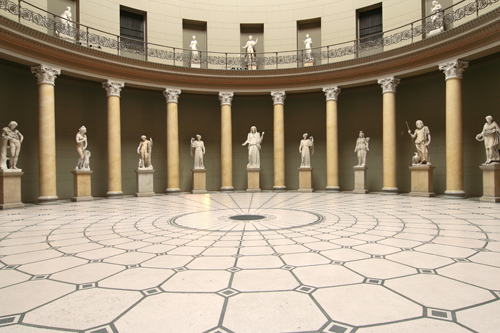Do you know why you behave the way you do? Getting down to the core of what motivates your perspective, thoughts, feelings, and actions is key when you want to rewire who you are or how you live. While the nature vs. nurture debate rages on, archetypes—your energy guides—offer a simple way to envision your identity, plus how and what to change.
Plato was the first to propose the idea that would become our modern understanding of archetypes. In his philosophical worldview, he declared the existence of Ideas or Forms: abstract representations of what we see and feel around us. The word “archetype” itself comes from the Greek words archein (“original,” “old”) and “typos” (“pattern,” “model,” “type”). Together the words mean “original pattern” and refer to the universal patterns of experience common to every human. Centuries later, Swiss psychologist Carl Jung developed the idea of how archetypes operate in human consciousness.
While there are many archetypes, it’s generally accepted that you have twelve dominant ones that combine to form patterns of behavior. Think of them as your Greek chorus, with each member having a solo that compels you to do, see, think, or feel certain things.
While there are many archetypes, it’s generally accepted that you have twelve dominant ones that combine to form patterns of behavior. Think of them as your Greek chorus, with each member having a solo that compels you to do, see, think, or feel certain things. Which twelve are dominant is specific to you, but we all have four universal base archetypes: child, victim, prostitute, and saboteur. While these may sound negative, they all have strong positive benefits, too, as they teach you to develop strengths and serve to protect your core identity. After these, your remaining eight develop and alter in influence throughout your lifetime.
Symbolizing your choices for mounting a survival response to major life challenges, the four principal archetypes represent vulnerabilities, struggles, and fears that motivate you to negotiate away your power—or learn how to keep it.
- Child. Guardian of innocence, this element develops your perspective about family, life, loyalty, and safety. One of these subcategories will be more dominant than the others: Orphan, Wounded, Magical/Innocent, Nature, Divine, Eternal Boy/Girl. Positive benefit: helps you feel healed, nurtured, and cared for.
- Victim. Guardian of self-esteem, victim energy alerts you to danger and creates situations in which you directly examine your relationship to power—whether you retain it or give it up. Positive benefit: helps you recognize options for making stronger choices based on your own values.
- Prostitute. Guardian of faith and encompassing far more than sexual situations, this energy compromises integrity by negotiating its sale for reasons related to financial gain or fears for financial survival or negotiating your power in terms of thought processes and emotions. Positive benefit: alerts you to situations that require you to remove yourself rather than sell yourself.
- Saboteur. Guardian of choice, this energy corresponds to fears and issues related to low self-esteem that cause you to choose circumstances that reduce or block your empowerment and success. Positive benefit: helps you learn to have courage in the face of change.
Because each energy guide has both positive and negative aspects, identifying and naming archetypes to explain behavior offers an opportunity to take a step back, assess what’s happening, and choose a response or alternative action.
Because each energy guide has both positive and negative aspects, identifying and naming archetypes to explain behavior offers an opportunity to take a step back, assess what’s happening, and choose a response or alternative action. The Victim, for example, has obvious negative traits that affect personal experience. But its presence can identify when you’re using Victim thinking to evoke sympathy or pity, which clues you in to the need to make a more empowered choice. Similarly, how often do you notice that you identify a goal, take action toward it, and then do something that makes success impossible? Instead of accepting defeat, you might coach yourself by saying, “This has the fingerprints of my Saboteur all over it!” With that insight you can tap into the advantage of this archetype by figuring out what makes you fearful about the wanted success, plus how to eliminate the fear so you can move forward with confidence.
For a fantastic, deep explanation of these concepts and a process for identifying and using your personal archetype team, take a look at Sacred Contracts: Awakening Your Divine Potential, by Caroline Myss.




